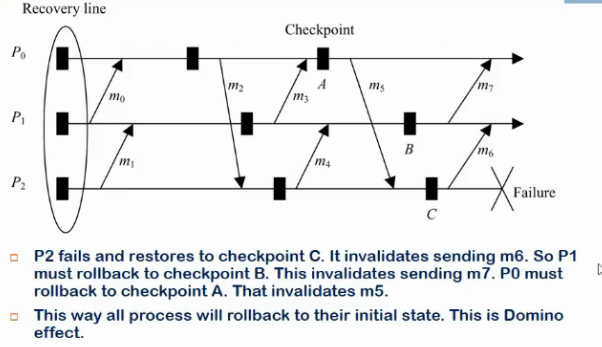Lecture 12
Video
Problems
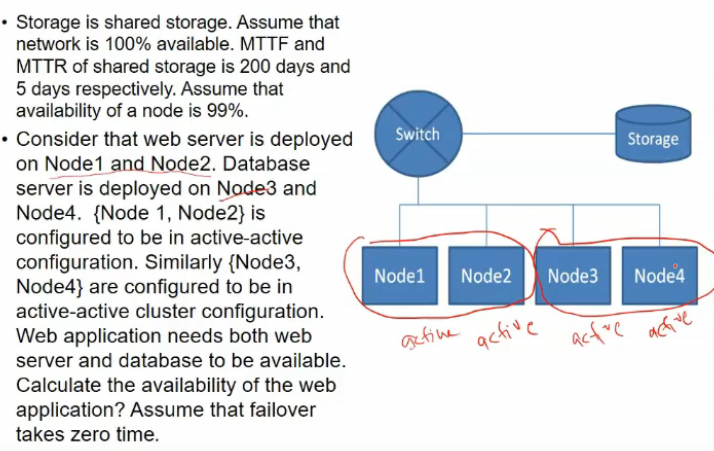
- node 1 and 2 are in a cluster and a-a configuration
- this fail only when both are not avail
-
similarly db server not avail if node 3 and 4 both fails
- so avail = 1*(200/205)*(1-(1-0.99)^2)*(1-(1-0.99)^2) = 97.54%

- node 4 is hot standby node
- failure scenario?
- 1 node fail, toh no problem
- so atleast 2 node fail = 4C2*(1-0.99)^2 + 3node fail + 4 node fail(baki 2 ko ignore karde)
- so avail = 0.9994 for ndoes then *(200/205) (for storage)
Fail Over Management
- diagnosing fault?
- passive monitor karra active ko
- how does it know active does not work now
- heartbeat msg
- frequently send heartbeats
- if nahi aye msg within some time or within some retries, bt
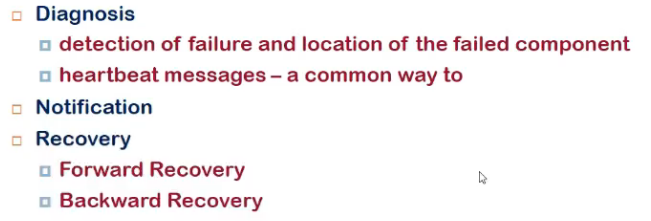
- to monitor, monitor h/w components
- h/w components me sensor hote, temp vagairah monitor karke dekh le
- applicaiton lvl monitoring karle
- webserver is working or not
- linux me proc file system hota na ki ek process ki state store hoti jisme
- we can also monitor log files(agar apache hai, for eg), I/O status
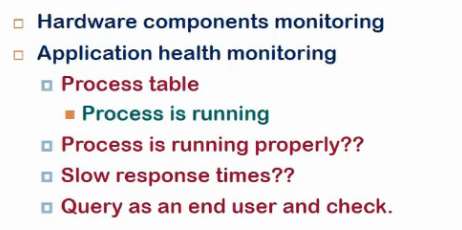
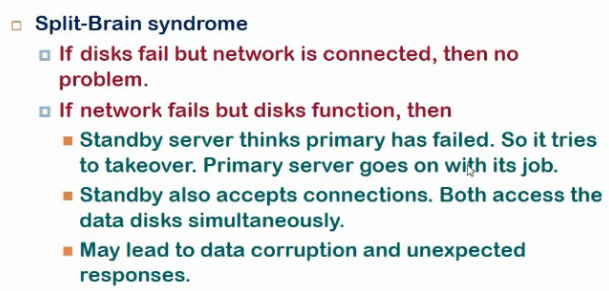
- one prob that happens is, agar heartbeat nahi mili, we assume ki node failed, but it might be ki n/w has failed
- disk agar fail hui toh split brain syndrome
- both are (active-act me) assume other is dead
- act-pass me pas thinks act is dead
- both write to disks and corrupt data
- Solution to split brain syndrome?
- if n/w is spof, these might happen
- but if dual n/w ho (each system connected to 2 subnets)
- so heartbeat na aaye toh check kar ki dusre n/w pe gaya ya nahi.. agar nahi so ha bt hai, agar gaya toh n/w me bt
Checkpointing
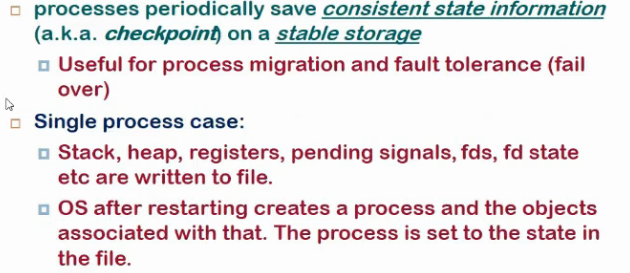
- a process can fail at anytime in between
- saves consistent info in stable storage
- one reason is procss migration (Send snapshot as well)
- another is failover - fault tolerance
-
do not restart from beginning
- db me bhi hota na lock write wala cheejein
- chp means until that point it has been checked and now is safe data
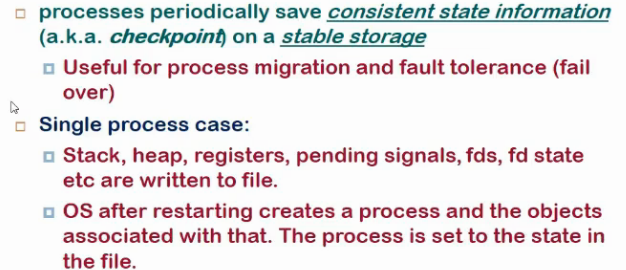
- How to do checkpointing if idk how process is functioning, can’t change source code
Levels of implementation
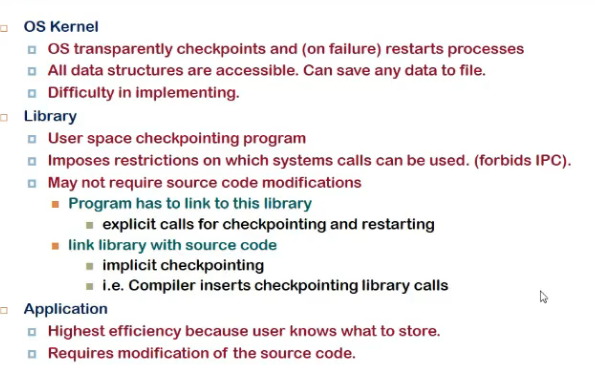
OS Kernel
- if we have some changes doen to os which can transparently, regularly take snapshots, then it can reload easily
- easy to do in it, bcz iske pas varied view hai and sare main ds isme hai
- but it is not easy to implement
Library
- library will do checkpointing
- when compiler is compiling, it will insert checkpointing calls
- that call will go to library and lib wil take snapshots
Application
- user himself takes snapshot
- reaally efficient bcz usko aalum kya karna
- but part of source code and might not be avialble all the time
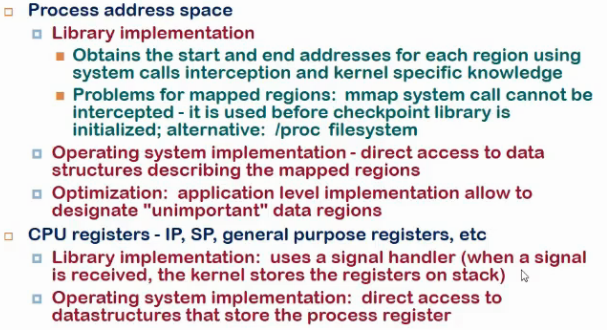
- proc file me store hota ki user space kya, etc, waha se read karle and store in file
- os level registers kaise?
- using signal handler
- when signal delivered, kernel stores all on stack
- access tha area in handler and read stack and save

- hidden copies?
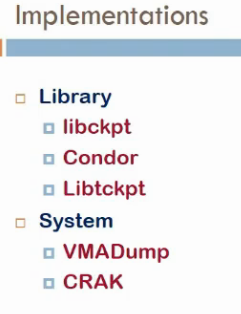
Failure recovery
- recovery wt checkpoint
- backward or forward recovery
- when failure happens, latest checkp restored and operation restored
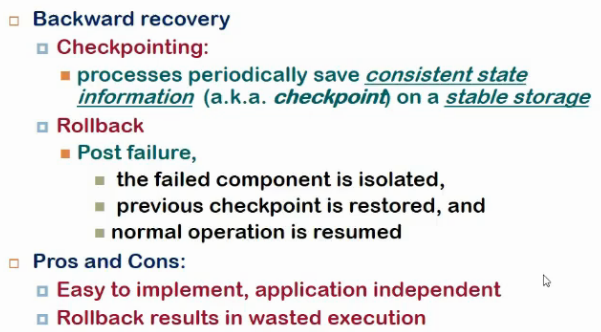
-
rollback mtlb we will have to start from las checkp but again instructions execute karunga mai
-
forward
- do not look back
- continue ahead
- achieved by having redundancy
- triple modular redundancy
- 3 bar kar har cheej
- if majority says smth, minority kuch aur, go with major
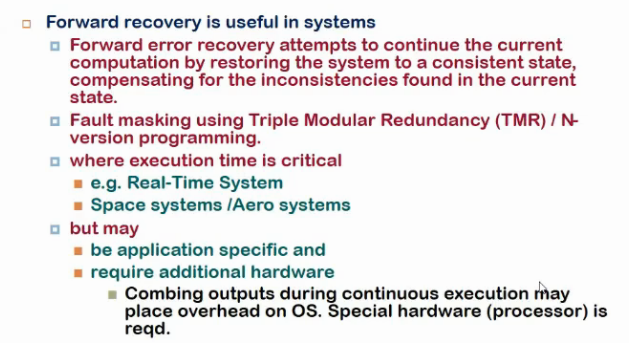
- tradeoff hai
- inconsistency kaise resolve and all depends upon application
Checkp overheads
- time overhead
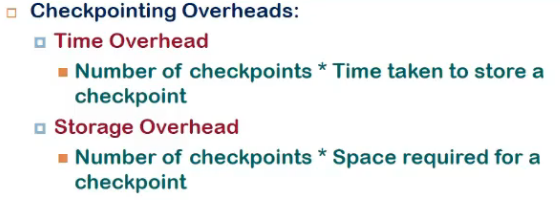
How to do it to get less overhead
- shorter intervals => faster recovery
- larger => shorter
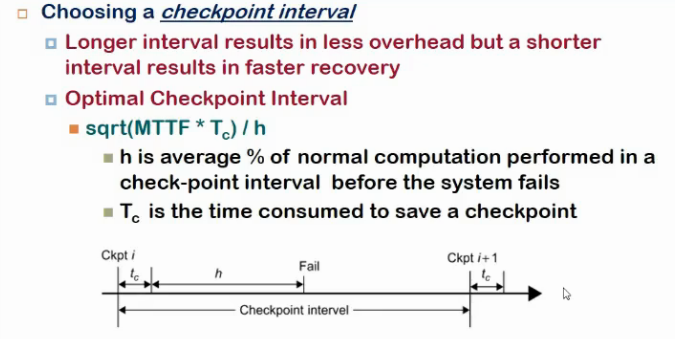
- tc = time consumed to take checkpoint
- h = kitna kam karna padega checkp ke bad to recover from failure
- minimize h and increase mttf
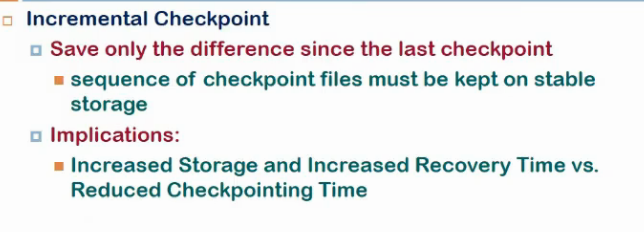
- don’t take snapshots from scratch always, take incrementally
- so we need to have every checkp stored, so more storage
- more time
-
reduced checkp time
- when taking checkp, I cannot do any computation at that time, so no useful thing at that time
- so fork checkpointing
- parent forks, child me sab copied, child now does checkp
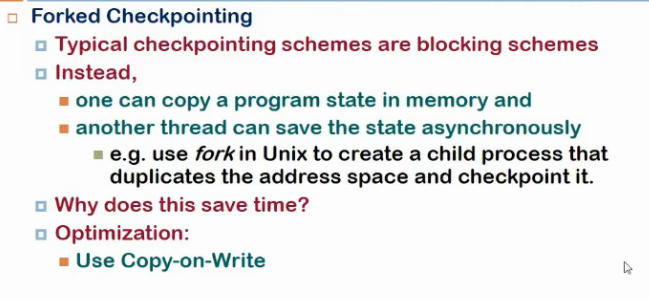
Checkp in msg passing systems
- say multiple processes exchanging msgs, and a causal relnship b/w them, so order me lena padega checkp
- process i se chala msg, j me nahi pahuncha
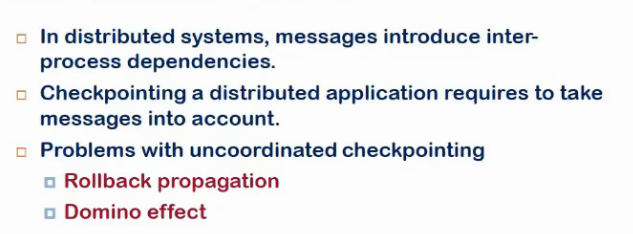
Rollback propaagation and domino effect
